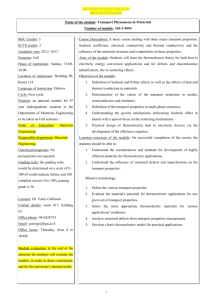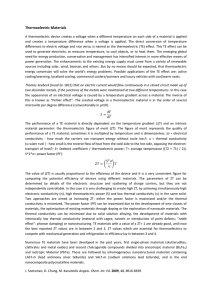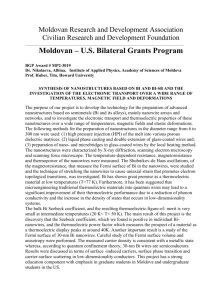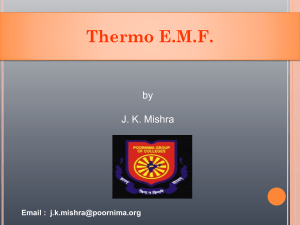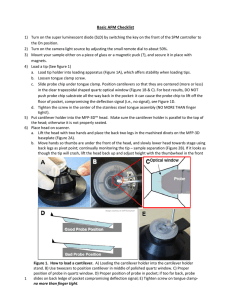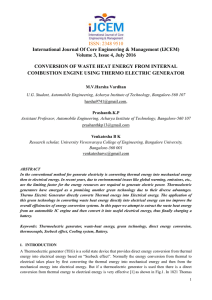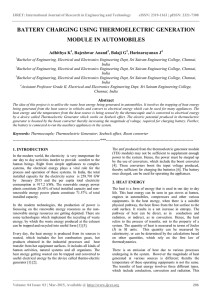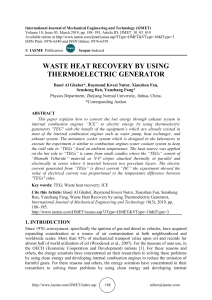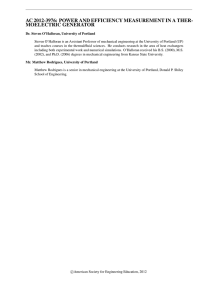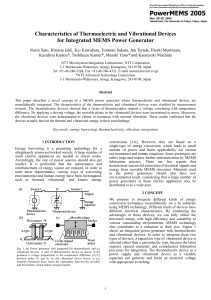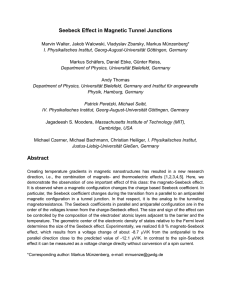Document 13545686
advertisement
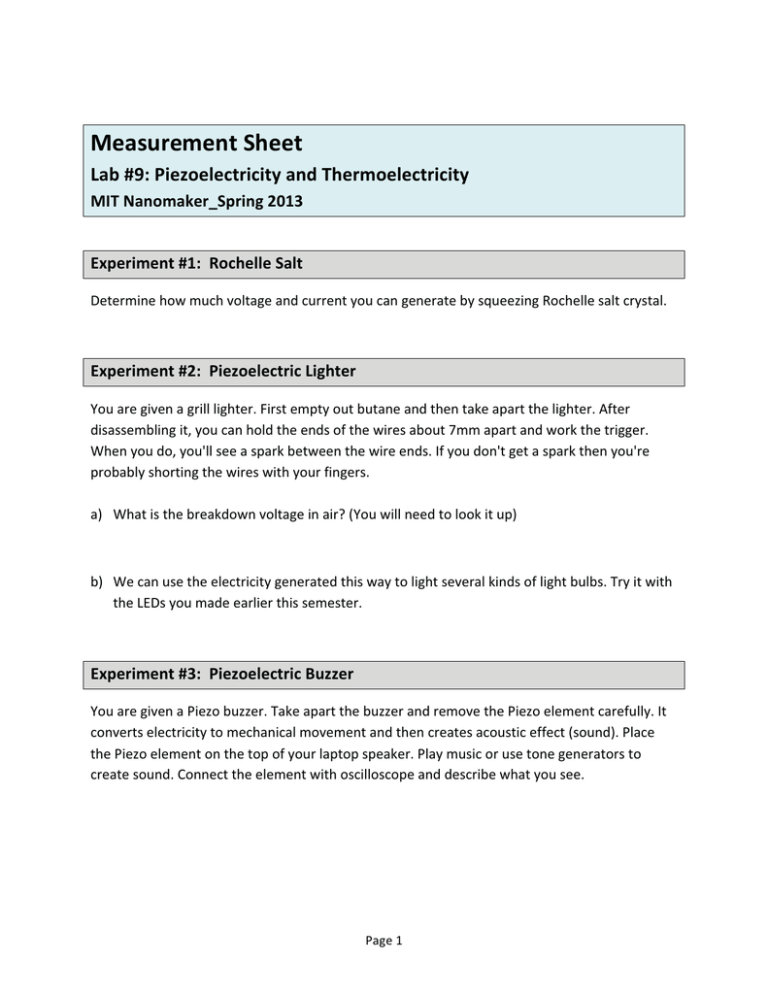
Measurement Sheet Lab #9: Piezoelectricity and Thermoelectricity MIT Nanomaker Spring 2013 Experiment #1: Rochelle Salt Determine how much voltage and current you can generate by squeezing Rochelle salt crystal. Experiment #2: Piezoelectric Lighter You are given a grill lighter. First empty out butane and then take apart the lighter. After disassembling it, you can hold the ends of the wires about 7mm apart and work the trigger. When you do, you'll see a spark between the wire ends. If you don't get a spark then you're probably shorting the wires with your fingers. a) What is the breakdown voltage in air? (You will need to look it up)� � b) We can use the electricity generated this way to light several kinds of light bulbs. Try it with the LEDs you made earlier this semester.� � Experiment #3: Piezoelectric Buzzer You are given a Piezo buzzer. Take apart the buzzer and remove the Piezo element carefully. It converts electricity to mechanical movement and then creates acoustic effect (sound). Place the Piezo element on the top of your laptop speaker. Play music or use tone generators to create sound. Connect the element with oscilloscope and describe what you see. � � � Page 1 Experiment #4: Thermoelectricity The thermoelectric effect is the direct conversion of temperature differences to electric voltage and vice-versa. 1) You are given a thermoelectric device. Connect it to your ohm-meter and describe what you see. And why? 2) Thermoelectric devices are made from alternating p-type and n-type semiconductor elements connected by metallic connectors. How do you tell them apart? � Experiment #5: Seebeck �oefficient The Seebeck coefficient describes thermoelectric voltage in response to a temperature difference across that material. Please use a hot plate and multimeter to measure the Seebeck coefficient of the devices. � � � � � � � � Page 2 Follow-up Questions: - The AFM consists of a cantilever with a sharp tip (probe) at its end that is used to scan the specimen surface. The cantilever is typically silicon or silicon nitride with a tip radius of curvature on the order of nanometers. Sometimes we coat the tip with a thin layer (10-150 nm) of Platinum or �obalt. Why? - In AFM, when the tip is brought into proximity of a sample surface, forces between the tip and the sample lead to a deflection of the cantilever. How does the force change with the distance between the tip and the surface? Page 3 - A thermoelectric generator is placed on a hotplate at 100 ��. The ambient temperature is 20 ��. To cool the cold side, a heat sink with thermal resistance of 15 ��W is placed on the top of the thermoelectric generator. We know the thermal resistance of the generator is 5 ��W and the Seebeck coefficient is 200 ����. (a) What is the open-circuit voltage? (b) The open-circuit voltage from experiments is smaller than what you have calculated. What could be the reason of it? � Page � MIT OpenCourseWare http://ocw.mit.edu 6.S079 Nanomaker Spring 2013 For information about citing these materials or our Terms of Use, visit: http://ocw.mit.edu/terms.

